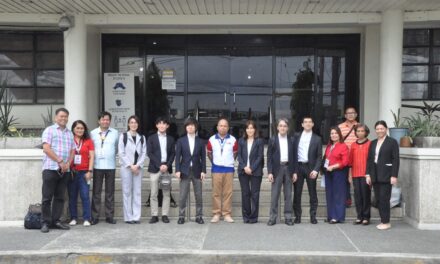
Will Japan Post be parcelled out to pvt hands?
THE TUSSLE between Japan Post and Mr Junichiro Koizumi commenced in 1992. In the very first press conference he held as the Minister in-charge, he vowed to cut the Postal Services System (PSS) to size (it was renamed Japan Post in 1992). He stepped up efforts after he took over as Prime Minister in 2001
Having failed to get full parliamentary support for his Bill, he has dissolved Parliament and is seeking public support in an election scheduled on September 11. Why should the reform of postal service raise such political hackles? Japan Post is not an ordinary postal agency. It operates 25,000 post offices nationwide and covers remote, mountainous and thinly populated areas. It has 400,000 employees. In the past, post-masters were leaders of standing in the rural areas and guided public opinion. Many owed their jobs to political bosses and were the bulwarks of the Liberal Democratic Party (LDP). More than delivery of mail, its role in raising savings and insurance funds has been phenomenal. Aggregate savings deposits with Japan Post amounted to 214 trillion yen ($1.98 trillion) last year. It is the largest financial institution in the world. Its deposits are equal to the combined deposits of four of Japan's largest banks. It holds 33 per cent of the country's time deposits and has contributed substantially to Japan Government Bonds (JGB)
Postal Life Insurance (Kampo), the other function, has provided the general public with modest cover at affordable rates. It gives effective competition to private insurance companies by offering lower premia and better service
A third of all new life policies are issued by it. Its deposits are valued at 136 trillion yen and its assets constitute 90 per cent of the insurance sector
What strengthened Japan Post was the synergy, by combining all its operations. The postal delivery system provided a nationwide network of manpower. It also acted as agents to raise deposits and secure insurance policies. Sharing of administrative and other costs provided for cross-subsidisation. More important, it enjoyed tax exemptions and cost-free government guarantees for the deposits and policies enabling it to offer better interest rates and lower premium on insurance policies. It is not surprising that Japan Post expanded over the years and became a mega institution. Latter day monetarists attribute its rise to these special advantages. Indeed, they did help. But they ignore more salient factors, such as risk aversion, ingrained in the Japanese psyche. Japan's banking system has had an uneven record ridden with cyclical crises. Safety and stability became more critical in people's decisions and they could not find a safer avenue than Japan Post. Besides, Japan Post provided financial security, which is provided by other countries, including the US, through state-funded social benefits. As Prof Mark Scher explained, "Postal savings in Japan has had a profound effect as a means for social growth and economic development. It still continues to serve this purpose by delivering financial services, often otherwise unavailable, to all segments of the population without discrimination, most notably the poor, as well as middle-class pensioners, rural and low-population areas." (Columbia Business School, WP 211, 2003.) The trouble was that Japan Post raised too much money, which had to be deployed prudently. The funds were channelled through the government's Fiscal Investment and Loan Programme (FILP). Commencing in the early 1950s, FILP had become a "second budget" to the government. The postal savings were deposited into the Trust Fund Bureau of the Ministry of Finance and on lent to FILP
The Ministry, in turn, managed FILP, which is a unique mechanism in many ways. In the post-War years and till recently, FILP operated lending programmes in line with national policies and changing economic requirements. It funded policy-based financial institutions such as the Japan Development Bank (JDB), which allocated funds for industrial and regional development schemes. Over four decades, JDB witnessed shifts in lending in line with government's policies and strategies. In fact, it was its massive funding, which led to the miraculous rise of Japan as an economic power and the second largest economy in the world. Its financing of frontier technologies made Japan a leading exporter in the world market. FILP assisted many other institutions, such as Japan Import-Export Bank, Japan Finance Corporation for Small Business, the Housing Loan Corporation, and so on. It included several state-owned corporations established for specific purposes. In the 1990s, when the bubble economy collapsed, Japan faced serious recession and the role of FILP changed. FILP shifted towards programmes to provide economic stimuli to the demand-starved economy. It supported structural adjustment programmes of industry. It financed infrastructure and construction programmes to promote employment as a measure of pump-priming a la Keynes. By and large, these programmes were successful and helped the country tide over the crisis and get on to the recovery path. However, the agency had grown too big and showed signs of sclerosis. Many began to doubt the continued reliance on FILP. FILP could have played a promotional role in earlier years when financial markets and private financial intermediaries were not well developed and long-term funding was not available to the private entrepreneurs. As Japan had grown into a developed economy in the OECD club, this ideology lost its relevance among the public, economists and policymakers. It generated a debate over the 'costs of FILP.' Neoclassical economists applied market efficiency criteria and questioned the performance of FILP. A number of researchers on both sides of the Pacific were unanimous in the view that FILP programmes had inflicted heavy losses to the economy. Their estimated damage to the economy varied from 15-20 per cent of GDP
Japan came under pressure to reform its financial structures in line with the OECD countries if Japanese banks and financial institutions had to expand in those countries. By the same logic, Japan had to open its domestic market to meet their expectations. The US exerted pressure repeatedly for reforms, under "The Investment Initiative," a part of the US-Japan Economic Partnership for Growth Initiative signed in 2001. Privatisation, especially of Japan Post, becomes an item of discussion in all high-level US-Japan meetings. Moreover, FILP came under attack within Japan and the rising new generation
Unlike the general budget, FILP had become opaque and its operations were not subject to any external scrutiny. It was not subject to the supervisory control of the newly created Financial Service Agency. The nexus with politicians and party in power ensured this freedom. Though FILP had come to adverse notice for a long time, it was not practicable to reform it radically. Though postal savings played an important role in Japan's post-War economic development, as explained by three economists in a recent study on "The Politics of Postal Savings Reform in Japan" (Asian Perspective, 2005), "these funds also became a source of pork barrel goods under the near exclusive domain of the Liberal Democratic Party (LDP) and were, therefore, linked to electoral politics." Like our own Congress Party, which was unchallenged for 30 years since Independence, the LDP evolved mechanisms to ensure its survival. "It is no surprise, therefore, that the institution of policy based financing became integrated into the LDP's political machinery and became a device wielded to satisfy the party's particularistic electoral strategies." Once the LDP machinery agreed upon a package on the basis of internal consensus, it would get parliamentary approval smoothly. The LDP would vote en bloc. Many observers attribute the absence of debates in the Diet to this syndrome. In the post-War years for over 40 years, the factions led by Tanaka and Hashimoto nurtured and thrived under this culture. It has changed in recent years due to changing demographic and economic circumstances. LDP began to lose its monopoly over power and seek partners. Individual voters began to assert their will. Rural voters have thinned and, as a corollary, the power of the postmasters has waned. The changed milieu led to the rise of Junichiro Koizumi who had a personal charisma and style, which appealed to the new generation of voters. He was not connected with the older factions. The LDP selected him hoping that he would win votes. Indeed he did. He was elected and became the Prime Minister in 2001 with a good majority. Reform of Japan Post became the centrepiece of his programme. Thus began the next round of his sumo. Will he succeed in this round? There are doubts. K. Subramanian (The author, a former Finance Ministry official, has experience in international, financial and trade issues.) Copyright 2005 Business Line













